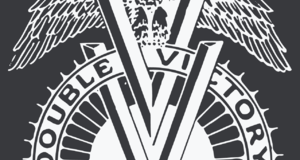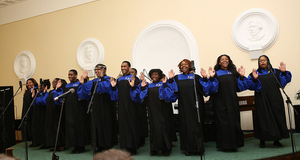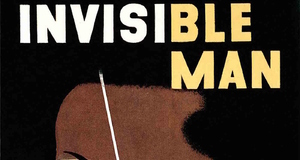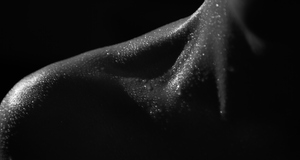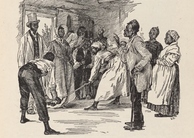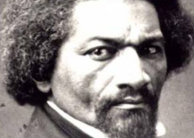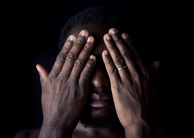In Search of Manhood: The Black Male's Struggle for Identity and PowerModern-day discrimination manifests itself through institutional racism i.e. criminal justice system, the educational system, the healthcare system and the workplace. Black men have shifted from the institution of chattel slavery, to the institution of the prison industrial complex. Harvey & Allard (2008) assert “perhaps in no other institution are there more blatant examples of institutional racism than in law enforcement and the criminal justice system” (p. 51). “Of the 2.3 million inmates in custody, 2.1 million are men of that Black male represent 35.4%, the largest percentage. Across all age categories, black males are incarcerated at higher rates than white or Hispanic males” (Sabol, 2007). A longitudinal study conducted by Johnson and Johnson (2006) revealed that the impact of incarceration on wages is most severe for Black males and that regardless of their former incarceration status, Black men earn significantly less (3). A Princeton University workplace study had similar conclusions; their study showed that white males with a criminal record had a slightly better chance of getting a job than a Black male with no criminal record (Harvey et al.). Research studies have conferred Johnson’s findings that suggest that white men with the same education are more likely than Black men to be promoted in organizations (Harvey et al.). Despite the efforts of Affirmative Action to diversity the workplace, Black men continue to have difficulties in the labor market “in good times and in bad, the unemployment rates for this population tends to be about double that of whites. The marginal and faltering ties they [black men] have to the labor market are devastating entire families and communities. Rising unemployment adds to the difficulties already affecting vulnerable families that live in communities plagued by poor educational outcomes, declining neighborhood quality, and high rates of incarceration” (Cawthorne, 2009). The legacy of racism’s historic and contemporary effects on the ability of the Black male to fully function as a citizen of equal status in America, serves as the catalyst for the complex identity formation characterized by oedipal conflict, double consciousness, and a peculiar affinity for white male patriarchy.Formation of Identity, Issues, and ChallengesPsychoanalytic theory postulates that the structural component of identity exist in three levels: conscious, pre-conscious, and unconscious. In a careful analysis of Black male identity formation through observation and research, the author will argue that they [Black men] are conscious of the abusive and oppressive nature of the society in which they live. They often reflect a duality of consciousness in understanding that their experience in America historically have not meet their basic needs (love, nurture, belongingness, acceptance) and have instead produced a diverse group of men in modernity, often homogenized into boxed identities [stereotypes] in American culture. The obtaining of power and the ability to enact traditional masculine roles is the striving for every male child. However, as the Black male transitions from childhood to adolescence, and unresolved conflicts related to psychosocial development are retarded due to insubstantial access to masculine status and the historical continuance of social, cultural, and economic disadvantages, it become increasingly evident that academic, career, and social prosperity in the later stages of development have the potential for negative outcomes. The process by which Black men have formulated their identities is rooted in trauma. Because trauma is often too painful to confront or deal with, it becomes a psychological mechanism of defense for one to utilize various tactics to shield themselves from the reality of their situation. Initially, such avoidance maybe conscious, but later it becomes automatic and unconscious (Pervin, Cervone & Oliver, 2005). A primary or psychologically primitive form of defense mechanisms is that of denial. For Black males, denial of their powerlessness and childlike functioning is existent in the multitude of contemporary issues that are exhibited within their dysfunctional behavior. Harris (1995) asserts that in order to compensate for feelings of powerlessness, guilt, and shame, some Black males of lower socio-economic status have redefined masculinity to emphasize sexual promiscuity, toughness, thrill seeking, and the use of violence in interpersonal interactions. Observable mannerisms characteristic of this set of alternative masculine behaviors include physical posture, style of clothing, content and rhythm of speech, walking style, standing, form of greeting, and overall demeanor (280). In addition to denial, perhaps the most prevalent of all defense mechanisms in Black males is repression. Repression in the author opinions is the root cause of violence, exhibited by Black males , coupled with misogyny, and the difficulty in developing and maintaining healthy relationships especially with Black females. Operating out of both denial and repression, it can only be assumed that the correlation between dysfunctional behavior not be consciously tied to social oppression, but rather acted out towards other victims of the same phenomenon. According to Erikson, up to the stage of adolescence, development mostly depends on what is done to us. From here on out, development depends primarily on what we do. And while adolescence is a stage at which we are neither a child nor an adult, life is definitely getting more complex as we attempt to find our own identity, struggle with social interactions, and grapple with moral issues (Harder, 2005). The psychosocial crisis of identity versus role confusion formulates the beginnings of unconscious desire of the Black male to emulate white male patriarchy. hooks (2004) defines patriarchy as “political-social system that insist that males are inherently dominating, superior to everything and everyone deemed weak, especially females, and endowed with the right to dominate and rule over the weak and to maintain the dominance through various forms of psychological terrorism and violence” (p. 18). Hooks further argues that boys who are victims of patriarchy often become the world views of patriarchy, unconsciously embodying the abusiveness that they recognized as evil (p. 28). For the Black male, the connection between masculinity and power is represented by white male patriarchy. Bergner (1998) maintains that the white males is “overdetermined as an oedipal father; he is the agent of a racist social order prohibiting Black males not only from satisfying sexual desire, but from achieving basic autonomy, normative masculinity, and self-determination” (p. 253). The impact of a young Black male bearing witness to the castration of the biological father [if present] and then other black males, literally and figuratively “suggests that their perspective as both witness and participant is an active even transformative experience. Castration symbolized a “feminine” position; in identity development the conflict begins to manifest as the adolescent male, in the stage of searching for an identity has to decide with whom he will identify. Gender implies identification with the “master’s” [White male patriarchy] authority; his race suggests identification with powerlessness and fear (Bergner, p.253). The peculiar affinity towards white male patriarchy in an attempt to deny and repress social realities, and unconsciously obtain nurture and acceptance, the Black male develops fixations. Consistent with identity and personality development, Black males exhibit all three personality types, oral, anal, and phallic. The oral personality is rageful, mistrustful, and depressed. Conflict leading to violence is returned to anyone [typically, other than the white male] causing the him [Black male] to feel inferior, thus resurfacing repressed emotions and denied realities. His anal personality exhibits anxiety when he feels that he is no longer in control of the situation as it serves as both a trigger and a reminder of for his social status in America. In defense, hostility acted out as a way to regain the feeling of control. Lastly, the most prevailing of all the personality types is the phallic character. The Black males efforts to portray manhood premised upon learned behavior, is often defined by sexual conquests. Consciously aware of his pervasive castrated status, when challenged by other males of his race, it leads to an outward display of aggression and exertion of pseudo-masculinity in order to subconsciously satisfy the desire of denying his castrated position. For the Black male that obtains a conscious understanding of themselves and the dynamics of societal and institutional racism and its effect on their development, traditional standards of masculinity are undesirable, thus becoming redefined to be consistent with alienation from mainstream values and institutions (Harris, 1995, 279). The Results of OppressionIn order for one to understand the harrowing outcomes associated with Black male development, the results of historic and systemic oppression must be examined. Harris (1995), quotes Bowman in making the assertion that "among high risk Black men, chronic role strains and related psychosocial problems do not just occur at a point in time, rather, they evolve out of interactions between past role experiences, immediate role barriers, and adaptive efforts" (p. 279). The results of oppression manifest itself through disparities in every social system and dysfunctional behavior for Black males, especially the behavior of violence. Boodie (1997), confers with the authors assertion by stating, “the psychological theories of homicide proposed by Black psychiatrists Poussaint (1983), Grier and Cobbs (1968) and Pierce (1970) stress the chronicity and severity of frustrations Black males experience in American society. These frustrations engender feelings of rage which are displaced on targets in their immediate environments. The high incidence of Black-on-Black homicide reflects this displacement” (p. 2). The cycle of violence has it origins in the marginalization experienced by Black males in American society; thus leading to feelings of alienation from a society that projects citizenship and equality, while simultaneously contributing to the destruction of self-worth and infringement upon the ability of the black male to to enter into manhood. In his article describing the impact of systemic social structure on Black male violence, Powell (2008), states “when a group occupies a stigmatized social space prescribed by the dominate group, it is not surprising that its behavior is seen as threatening” (313). This notion put forth by Powell is particularly true for the Black male. hooks (2004), supports Powell’s assertion in her description of the process in which Black males are socialized through White male patriarchy to equate power and masculinity with violence “by the time slavery had ended, this patriarchal culture had been transmitted with violence as an acceptable expression of power” (Powell, p. 313). Much of the stigmatization that exists about Black male violence is due to negative historic stereotypes and reinforced patriarchal masculinity. On the converse, much of reality of Black male violence is a direct result of their position within American society that has been and continues to be characterized by “societal oppression, internalized racism, violent social learning environments, sexism, male socialization, and economic exploitation” (Williams, 1998). Economic oppression adds another dimension to the reactionary behavior of Black males in the home environment as well on a community level. A study conducted by Charles and Guryan (2009) revealed a correlation between racial prejudices of employers and the differences in wages between black and white workers; lower annual salaries, higher unemployment rates, and higher incidences of stressors, places Black males at greater risk of perpetrating or being a victim of violence. A statistical report on domestic violence by the U.S. Department of Justice (2000) showed households with the lowest annual household income had higher incidences of domestic violence; nearly seven times greater than households with higher annual incomes. The reaction of violence is often an attempt of the Black to regain control, respect and status as social respect [in Black male culture] “may be viewed as a form of social capital that is very valuable, especially when various other forms of capital have been denied or are unavailable” (Anderson, 2009, p. 66). The external expression and the internal emotions of anger, powerlessness, and frustration experienced by the Black male associated with a constant subjugation of a daily reminder of their unequal status, function as the precursor to Mental and Physical Health issues.Continued on Next Page » Suggested Reading from Inquiries Journal
Inquiries Journal provides undergraduate and graduate students around the world a platform for the wide dissemination of academic work over a range of core disciplines. Representing the work of students from hundreds of institutions around the globe, Inquiries Journal's large database of academic articles is completely free. Learn more | Blog | Submit Latest in African-American Studies |








